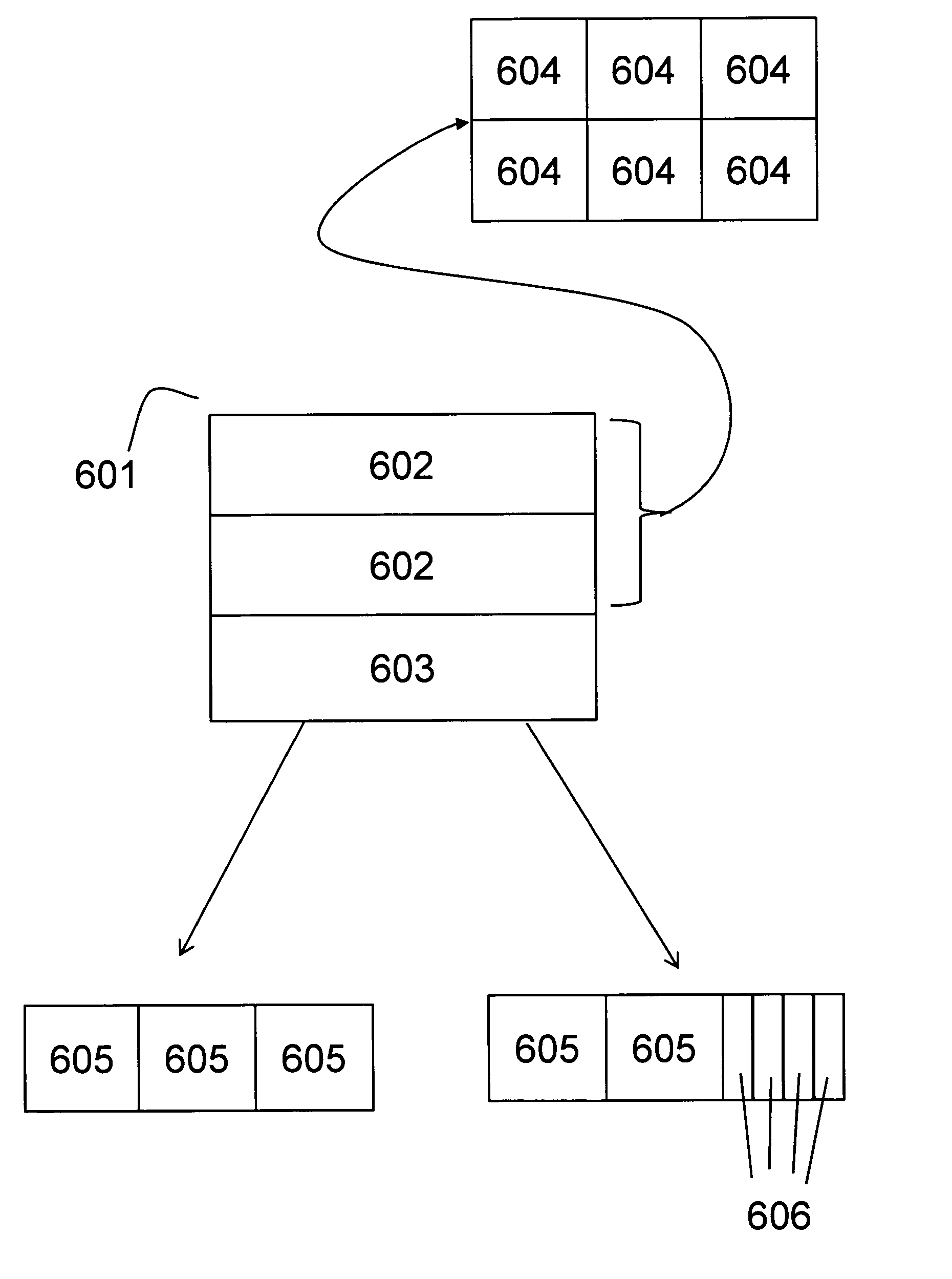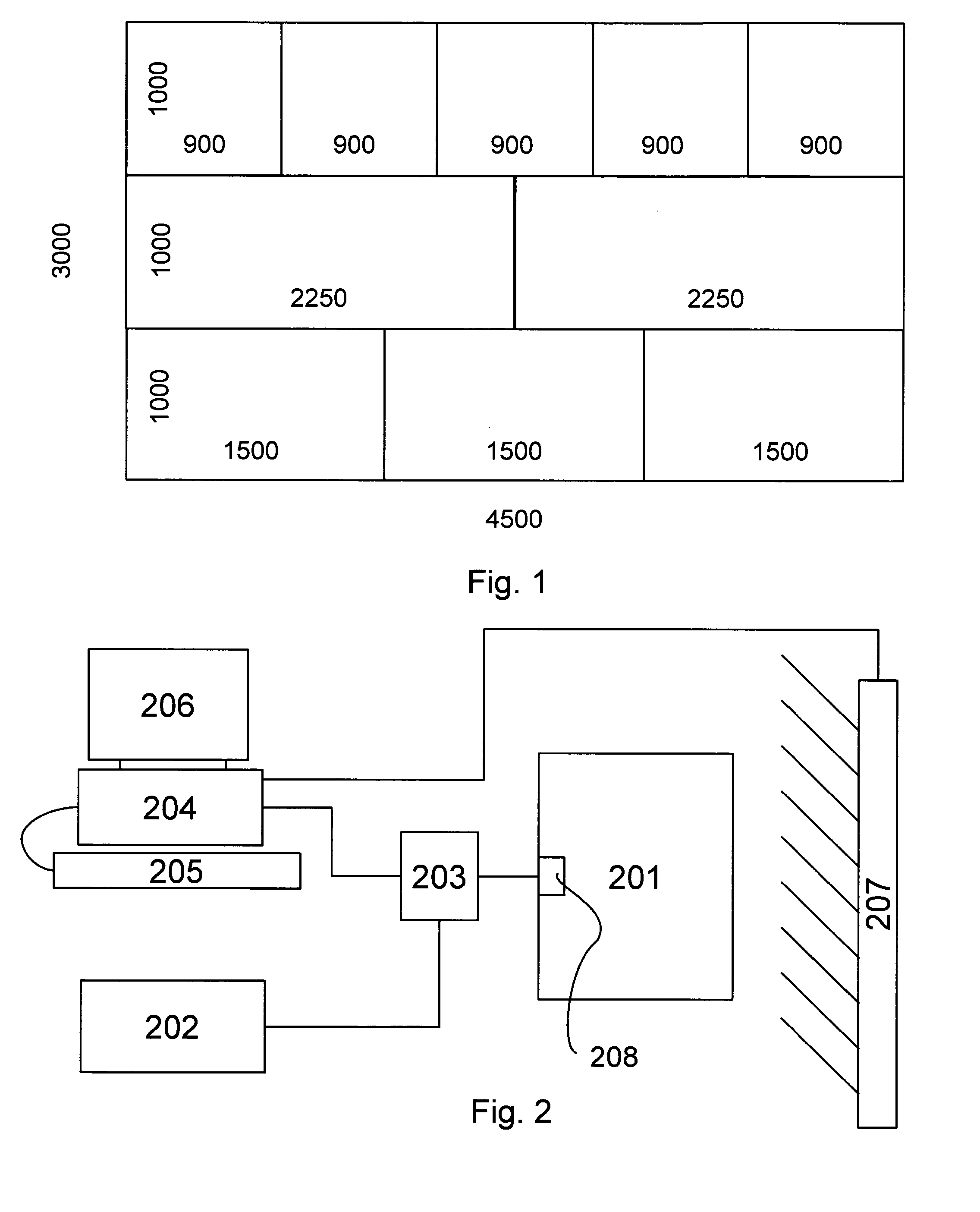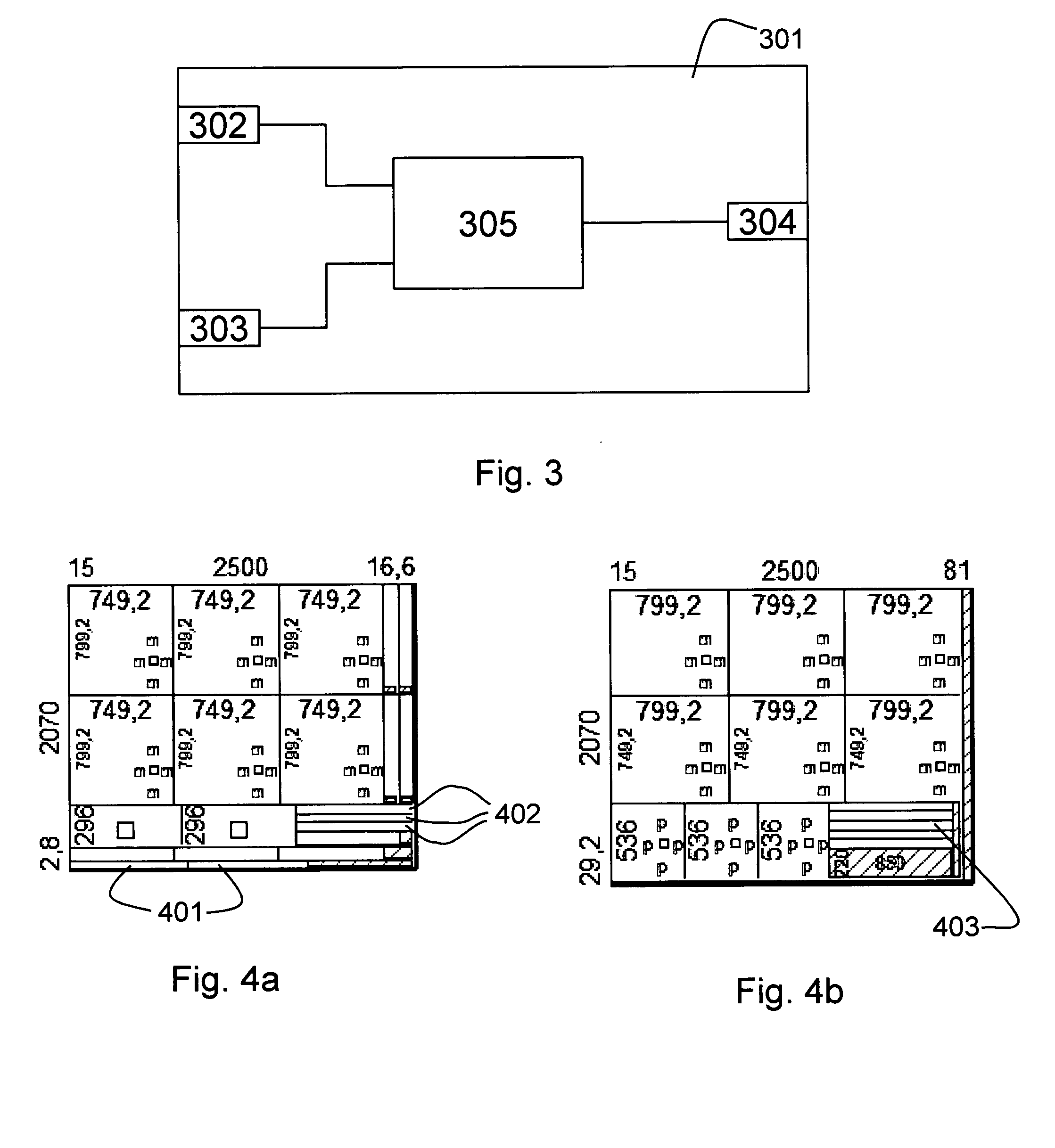[0020]Stacking the boards or rips means that a number of rips or boards are placed on top of each other. However, cutting devices have certain constraints on the volume of material that can be placed in the
machine for cutting. This means that a stack can only have a certain height. In order to increase the
advantage of the present invention, it can therefore be beneficial to not only stack rips but also align rips next to each other. Rips or boards placed side-by-side in an aligned manner can be processed simultaneously. This way, it may be possible to increase the number of boards or rips that are
cut or processed beyond the maximum height of the stack. For instance, if a cutting
machine is able to
cut a stack of five boards or rips high, it may be possible to align a second stack of five next to the first stack. This way, ten boards or rips can be processed or cut simultaneously.
[0021]The example given here is based on two identical layouts to be obtained from two boards illustrates how beneficial stacking boards can be. The present invention is however especially designed to process layouts wherein it is not mandatory that stacked rips or boards are completely identical in their further
processing of the subsequent levels. The current level that is being cut, such as the first level which are the first rips obtained from a boards, is identical except where the non-identical section is waste. However, the second level may be different for each element obtained in the cutting of the first level. The current level does not even have to be identical, for instance waste may be present in one or more rips of the current level which are not present in all the rips of the current level.
[0022]The rips can be obtained from the same, first board or from different boards such as a first board and a second board. Different boards can be of the same material or may even be from a different type of material. Typically, the boards will be of the same material such as all wood or all metal but the characteristics of boards may vary such as thickness, kind of material, colour, etc. The present invention is independent from the type of material and the number of rips or boards that are stacked. However, by taking into account the dimensions of the machines used in cutting and
processing boards and rips, it is possible to avoid stacks which are too high. This may however be resolved by both stacking and aligning stacks or boards or rips next to each other.
[0023]The simultaneous
processing can be cutting, such as dividing rips into smaller pieces but may also include other processing such as drilling, milling, painting,
grinding, adding
masking tape to cover cut-off sides, etc. Simultaneous processing may also be an intermediate step in between two cuts. For instance, rips can be stacked, then adjusted in size using a milling machine and then be separated again because the next set of cuts for those two rips does not overlap. An alternative intermediate step could be the application of
masking tape or
edge banding on the sides before further cuts. The latter may for instance be advantageous in a
scenario where the edges that have to be finished by
edge banding are too narrow for the
edge banding process. In such case, a part of a rip or an entire rip may undergo the edge banding processing before the parts are cut out of the rip. In other words, it is possible that the stacking or simultaneous processing of boards or rips is postponed until another operation has been completed. The other operation may be performed on a stack of boards or rips or may be performed on each rip or board independently. For instance, it is possible that two rips are cut into the same pieces but that one rip needs holes in certain pieces whereas the other rip does not require any drilling. In such case, it is possible to postpone the stacking and simultaneous cutting into parts until after the drilling of the holes in one of the rips.
[0024]The control module of the present invention provides instructions in order to improve the
cutting sequence of rips and boards, reduce
waste material. The present invention achieves this result by using a cutting device not in its automatic mode to cut complete boards according to the hierarchical level-by-level sequence. The present invention uses the cutting device in its manual modus but in an automated fashion (
programming cut by cut). Having the ability of controlling the machine as if it was a manual machine provides the ability to cut anything in any desired sequence and by doing this in an automated fashion, the chances for errors are reduced significantly.
[0025]The present invention may stack and / or align boards or rips if further processing at lower levels is not identical for all the boards or rips in the stack. If the current cutting level of stacking is also not identical, the non-identical part has to be waste or can be used to create later useable or frequently used components in order to enable stacking. A certain board may need to be cut in a series of rips forming the first level. Each rip of the first level is cut into parts forming a second level and the second level parts may be different and even requiring additional further cutting into subsequent levels. If only the first levels are identical, they can be cut together even if the subsequent levels are completely different. In other words, various boards can be cut into rips simultaneously whereas the parts of each of those rips may be different. If certain lower levels are identical, they can be stacked again for further processing.
 Login to View More
Login to View More 


